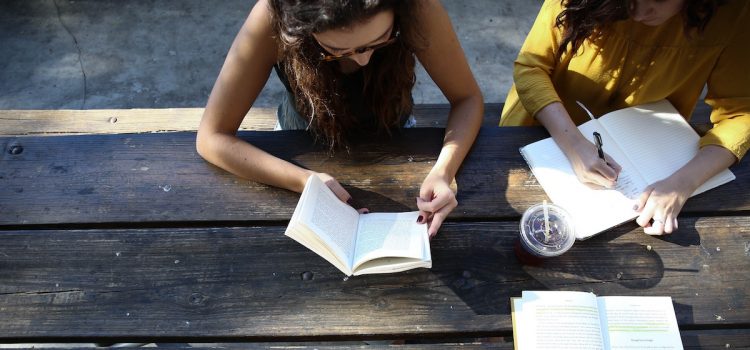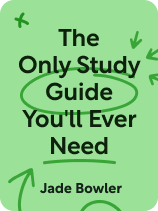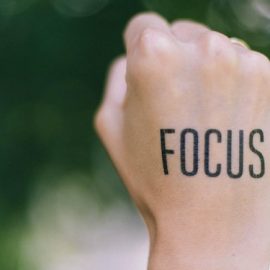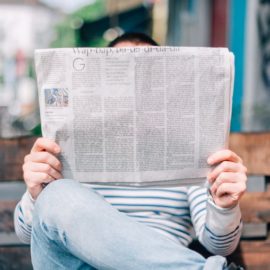

This article is an excerpt from the Shortform book guide to "The Only Study Guide You'll Ever Need" by Jade Bowler. Shortform has the world's best summaries and analyses of books you should be reading.
Like this article? Sign up for a free trial here.
What does “chunking information” mean? Why is it helpful for students?
Chunking means grouping together connected ideas so you can remember them better. Jade Bowler explains this concept in her book The Only Study Guide You’ll Ever Need so students can take advantage of this studying technique.
Find out why chunking information for students can boost your studying practices.
Create Connections
Bowler recommends chunking information for students through storytelling. She presents three different ways you can do so:
First, you can sort pieces of information into groups and connect each group in a logical narrative format. Bowler recommends this method because it connects the information you’re learning in a way that makes sense to you, making it easier to recall. (Bowler calls this method “chunking, chaining, and telling a story.”)
For example, if you’re studying for your Spanish exam, you can sort the vocabulary words for food into one group, cooking utensils into another, and table utensils into another. Then, tell a story about making dinner and use each group as a part of the process: First, you gather the food; then, you gather the cooking utensils; and once the meal is done, you eat with the table utensils.
Second, you can connect elements of a concept you’re learning to elements of a routine you perform regularly—this is especially helpful for processes you have to memorize or elements that have a particular order. (Bowler calls this method “Sherlock’s mind palace.”)
For example, you can connect each color of the rainbow to an action or object of your morning routine: First, you wake up underneath your red duvet. Next, you put on your orange slippers. Then, you go to the bathroom which has yellow walls. In the bathroom, you pick up the green toothpaste tube and use your blue toothbrush. Finally, you put on your indigo robe and say good morning to your mother, who is named Violet.
Third, you can connect elements of a concept to parts of a physical object—when you look at the object, it will help you remember the elements of the concept. For example, connect the three main stages of the hydrologic cycle to your water bottle: First is evaporation—you can connect this stage to the top part of your water bottle that’s foggy because of evaporation. Next is condensation—you can connect this to the water droplets inside your bottle and imagine that they’re the product of condensation, like raindrops. Finally, connect precipitation to the water sitting at the bottom of your bottle—imagine this is the rainwater that has fallen and collected.
Why Chunking and Ordering Information Improves Our Memory
In A Mind For Numbers, Barbara Oakley suggests that the underlying reason why turning information into a story aids memory is that it replicates the brain’s system of storing information and transferring it from the working memory to long-term memory. All three of Bowler’s recommendations—creating an original story to connect pieces of a concept, connecting parts of a concept to a routine, and connecting parts of a concept to an object—mimic this process.
Oakley explains that when our brain first absorbs information, it stores it as a “chunk” in our working memory—where information is stored while we process it. “Chunks” are bits of information that are bound together by a common theme or meaning—for example, the food-related vocabulary words for your upcoming Spanish exam might form one chunk, and vocabulary about the rooms of the home might be another chunk. The more we build connections between the bits of information in these chunks, the stronger the neural pathways within the chunks get; the deeper the chunk gets ingrained into our long-term memory; and the easier it is to recall the information within it.
When you actively break a chunk of information down into pieces and reconnect those pieces using a strongly connected narrative, routine, or object, as Bowler recommends, you’re providing your brain with a tool that will expedite the process of strengthening the chunk. Not only will this help you recall this information more easily and intuitively, Oakley explains, but it will also free up space in your working memory. Your working memory can only contain a few chunks of information at a time, so once you transfer chunks to your long-term memory, you’ll have more space to memorize and learn new concepts.

———End of Preview———
Like what you just read? Read the rest of the world's best book summary and analysis of Jade Bowler's "The Only Study Guide You'll Ever Need" at Shortform.
Here's what you'll find in our full The Only Study Guide You'll Ever Need summary:
- Why school doesn't have to be chronically overwhelming
- How students can manage their mindset, study habits, and time
- Science-backed time management and study techniques to help you ace your exams






